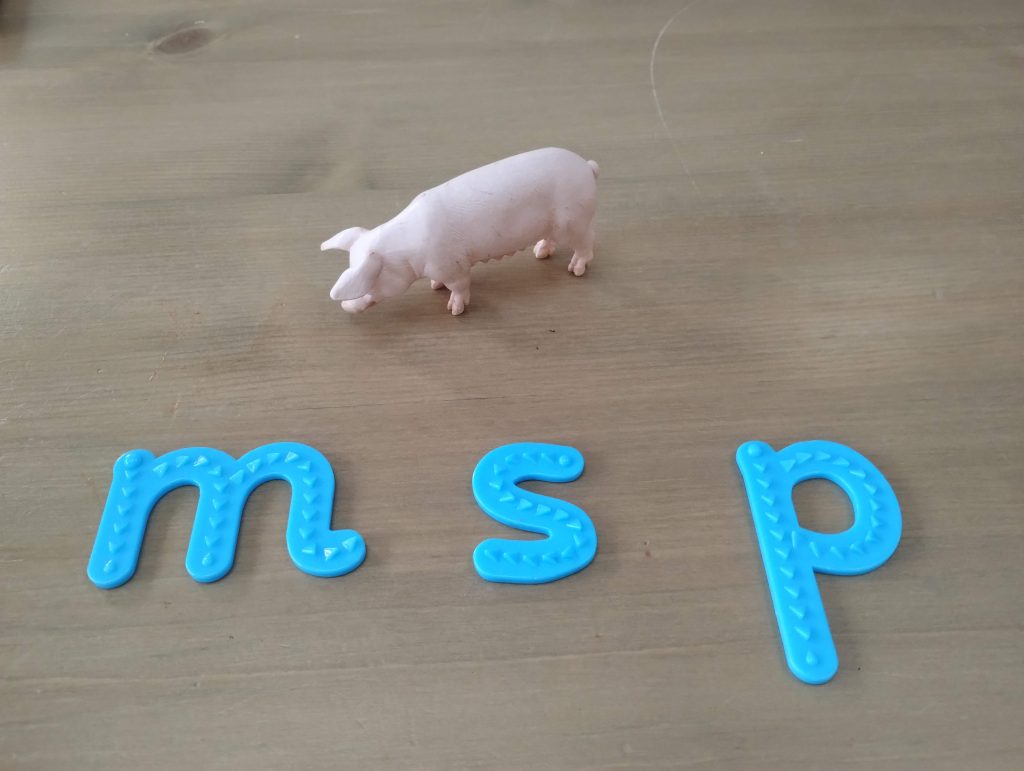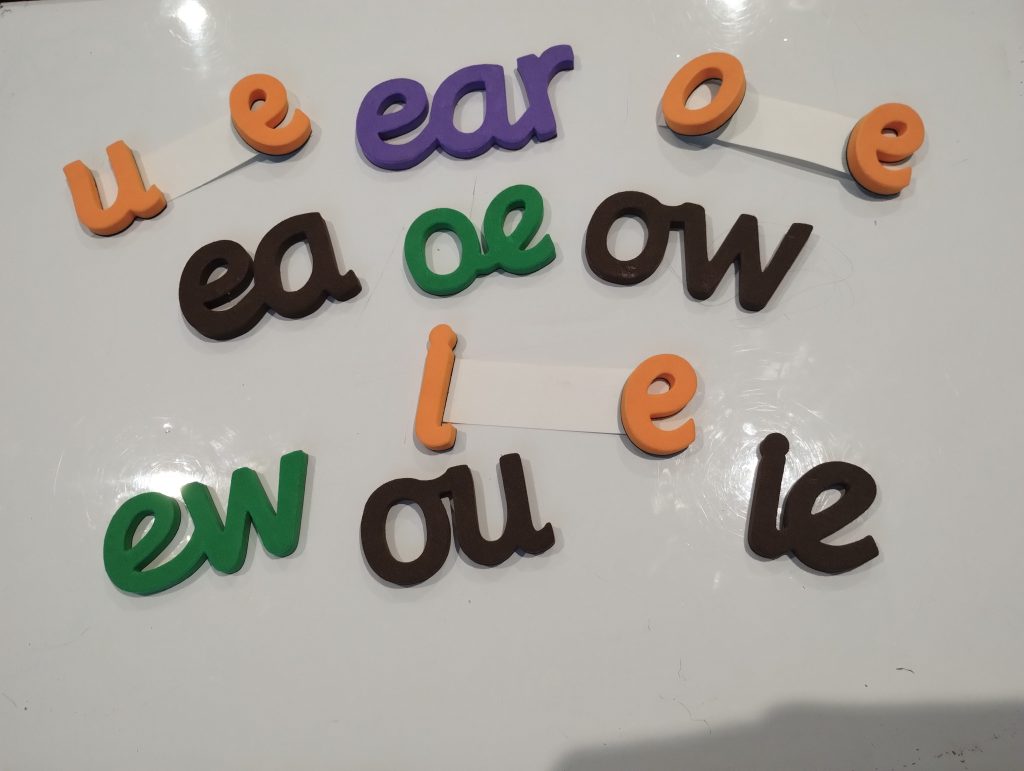Using Logic of English Foundations in the UK
In this post I share some thoughts on using Logic of English Foundations in the UK. There are some issues to be aware of concerning accent differences and spelling differences. I think these are mostly easy to overcome. I also have some concerns around differences in the order in which phonograms are taught compared to the typical progression found in British reading books. If you are using supplemental readers (and I think this is advisable), then it is helpful to be aware of these differences.
I have also written a longer post with a more general review of Logic of English Foundations if that is of interest to you.
Pronunciation
The UK has a rich range of regional dialects, so it may be that you experience slightly different issues to me, depending on where you live in the country. As the parent, I think it’s important to be aware of the instances where the sounds you attach to a particular letter are different from in the US.
Logic of English teaches all the sounds for a phonogram from the beginning. For example, a says ‘a’ for apple, ‘ay’ for acorn, and ‘ah’ for father. In the UK, a can also say ‘o’, particularly after w, such as in swan and what. a can also say ‘aw’ as in water. I believe that in many US dialects, some of those distinctions are blurred.
Now, I don’t actually drill my children with a says ‘a,ay,ah, o, and aw’, because that seems excessive, but being aware of this issue as the parent is important. It means that when those words come up, I can explain that this is another normal sound that a can make. Also, LOE is very keen on teaching children about broad vowel sounds (‘ah’ in the case of a), and that teaching doesn’t transfer very well to British English, so I tend to skip it. The words which use broad vowels in British English are very variable between local dialects, and don’t always correspond to American English.
(As an example, in Lesson 66, the examples for broad vowels are wash and want which do not have an ‘ah’ sound in British English, but rather an ‘o’. In some British dialects, there would be a broad ‘ah’ sound in words like father and bath but not in other dialects).
I also had a difference of views with LOE in Foundations C about the phonogram teaching for ear. Logic of English teaches that ear says only ‘er’ for search. I prefer to teach that ear can say ‘er’ as in search, ‘ear’ as in fear and ‘air’ as in bear. I couldn’t find this explicitly stated in the book, but I believe that Logic of English treats the ea and r in fear as two separate phonograms. I can’t hear that distinction in my British accent, it sounds like one sound.
I don’t think this is too big of a deal. I just taught the phonogram sounds I wanted to teach, as I hear them in our accent. But it did catch me on the fly in the middle of a lesson.
Overall, these differences of accent are mostly an awareness issue, other than the ‘broad vowel sounds’ topic, which I did heavily condense or skip, as we didn’t really need it and it was confusing.
Vocabulary
There are some minor spelling and vocabulary differences, but I didn’t find this to be much of an issue, I just explained them as they came up. Typical words that crop up are things like mom, yard, trash and cop.
Order of introducing phonograms
LOE introduces phonograms in quite a different order from what would be typical in UK reading scheme books.
Phonogram ordering in LOE Foundations A
At a single letter level, the first letters introduced in LOE are A, D, G, C and O. I believe these are introduced together because they are all formed in a similar way for handwriting, so that it is easier to learn to write them together. However, by the same token they look quite similar to each other, which does make it harder for children to distinguish them at this stage. Some of these letters (I’m thinking of a and g) appear quite differently in print from in handwriting, and LOE valiantly attempts to teach this distinction from the beginning. My children have found this really confusing, and I just think it’s unnecessary. In UK phonics readers, a and g are typically printed in the handwritten form that children are familiar with. It’s easy enough for them to absorb the printed forms once they are reading, rather than straight away when everything is new!
In contrast, in the UK, many children would typically learn S,A,T,N,I,P first, which are visually much easier to discriminate between. I do think that this is a better/easier order for teaching first sounds. However, this only makes a material difference if you are planning to use very finely graded early reading series (e.g. Dandelion Launchers) which have books only introducing a few letter sounds at a time.
Phonogram ordering in LOE Foundations B & C
The differences became more apparent in Foundations B and C when we started to encounter digraphs (two letter phonograms). Again, these were introduced in a different order to the UK. By this point, we were extensively using UK phonics-based readers, so that usually I had already introduced the phonograms before we encountered them in LOE Foundations C, rendering the phonograms section of the book rather obsolete. For example, oo (as in good but also the longer sound in room) is not introduced until Lesson 90 of LOE. Of course, one could just stick to the LOE Readers which are carefully ordered according to the sounds they have introduced. However, I don’t think that this would provide nearly enough reading practice for most children.

Overall, I still think that the benefits of the early phonemic awareness skills in Foundations A far outweigh the difference in phonogram ordering. However, these differences do reduce the usefulness of later books in the Foundations series if you are using British phonics readers, because children will likely need to be taught those new sounds separately, before they come across them in Logic of English.
Sourcing Logic of English Foundations in the UK
This post contains affiliate links. As an Amazon Associate, I earn from qualifying purchases.
It is not very easy to get hold of Logic of English in the UK at the present time! I actually prefer to buy the student workbooks as PDFs and print them myself, so that element is easy to obtain. Buying the PDF version means that you can print pages again, if you feel it would be helpful for your child to revisit an activity. For example, my children have enjoyed the ‘make your own’ books in Foundations A so much that they have often wanted to have another go.
For the Teacher’s Manuals, it is worth keeping an eye out for used copies on BookFinder.com or similar. I have ordered mine from Exodus Books in the US, via an intermediary shipper, which was expensive but did work.
If you decide to continue into Foundations B, C and D then you will need to source the sets of readers for those books.
Logic of English also sell an enormous number of other components, most of which can be substituted by alternatives more readily available in the UK. Of these components, I think the most useful are the flashcards, the game cards, and the handwriting whiteboard. I didn’t think Doodling Dragons or the other books for introducing phonograms were worth the money.
Here are the resources that we have used as alternatives:
- A set of tactile letters. We have this set from Learning Resources. I use these in the early stages of learning to read for drilling phonograms in Foundations A. I’ve never needed to drill phonograms in the later books in the same way, my children have picked up the digraphs quickly. For qu I just hold up a Q and U together. My children really like these letters because they can hold them and place with them.

- A set of magnetic phonogram tiles. We have the Junior Learning Rainbow Phonics Magnetic Letters Kit. Once children are beginning to blend and read simple words themselves, these magnetic tiles are very useful. We use them to practice new digraph sounds, and for learning to spell. They are larger and much easier for small hands to manipulate than the tiles supplied by LOE.

You will need to game cards if you want to play the phonogram drill games suggested in the Teacher’s Manual. I just haven’t found it necessary to do as much drilling of phonograms as is suggested in the book!
The Logic of English handwriting board is quite useful because the lines are pre-printed on it, so that you don’t need to re-draw them every time you rub out the board. However, you could easily laminate a piece of card with the same layout drawn onto it for a similar effect.






